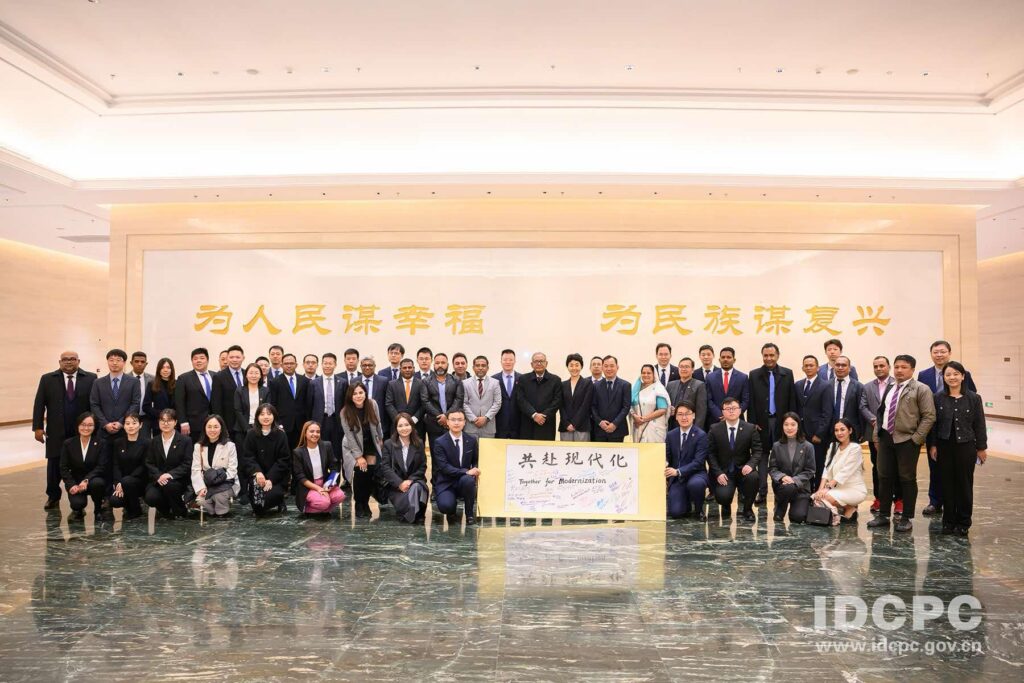From November 7 to November 15, we had the honor of visiting various regions of China as part of an official delegation organized by the International Department of the Central Committee of the Communist Party of China (IDCPC). This journey was an exceptional opportunity for representatives from South and Southeast Asian countries to deepen their understanding of China’s rich history, vibrant culture, and remarkable economic advancements. Starting in Hunan province, we explored the dynamic city of Changsha, followed by the scenic and progressive Guizhou province, and concluded in the political and cultural heart of the nation—Beijing.
Our journey began in the vibrant city of Changsha, the capital of Hunan province. On November 8, city officials, including the Deputy Mayor, warmly welcomed us and provided a comprehensive overview of the city’s historical and economic achievements.
One of the most memorable experiences in Changsha was our visit to the Hunan Museum. This treasure trove of Chinese heritage featured captivating exhibitions of ancient artifacts, ceramics, and artistic masterpieces, showcasing the creativity and ingenuity of Chinese civilization through the ages.
After immersing ourselves in history, we visited the serene Yuelu Mountain, a site known for its natural beauty and historical significance. This mountain, celebrated as a hub of Chinese philosophical and religious thought, offered a tranquil environment to reflect on the country’s rich cultural heritage amid lush greenery and expansive forests.
Our time in Changsha was not limited to historical and natural landmarks. We also toured several industrial and technological development centers, highlighting the city’s role as a hub of innovation and economic growth. Officials shared insights into Changsha’s strategic importance in fostering technological advancements and attracting significant investments.
Following our enriching experiences in Changsha, we traveled to Guizhou province, renowned for its breathtaking natural beauty, digital innovation, and industrial achievements. One of the highlights of our visit was the Balinghe Bridge Museum, an engineering marvel that stands as a testament to China’s architectural brilliance. The bridge symbolizes not only connectivity but also serves as a cultural and educational landmark.
In Guizhou, we explored state-of-the-art Big Data Centers, which play a crucial role in driving China’s digital economy. These centers provided valuable insights into the nation’s data management strategies and technological innovations. Additionally, we visited the Geely Automobile Manufacturing Plant, a cutting-edge facility that underscores China’s commitment to environmentally sustainable industrial practices and technological excellence.
The hospitality and warmth extended by Guizhou officials and residents made our stay truly memorable. Their dedication to showcasing the province’s achievements and their friendly demeanor left a lasting impression.
Our final destination was Beijing, the political and cultural heart of China. On November 14, we visited the Communist Party Museum, which offered a detailed account of China’s political history and progress. The museum provided a comprehensive narrative of the country’s revolutionary milestones, reforms, and global strategies.
In Beijing, we had the privilege of meeting with the Deputy Minister of IDCPC. During this insightful session, we gained a deeper understanding of China’s foreign policy, the strengthening of inter-party relations, and the country’s approach to addressing global challenges. This meeting underscored China’s commitment to fostering international cooperation and promoting a shared vision for development.
Beijing also gave us the opportunity to visit iconic landmarks such as the Forbidden City and the Great Wall of China. The Forbidden City, a symbol of imperial power and cultural heritage, left us in awe with its architectural grandeur and historical significance. The Great Wall, one of the world’s most remarkable engineering feats, provided a glimpse into the resilience and ingenuity of ancient Chinese civilization.
Throughout the journey, we were joined by delegates from Afghanistan, Bangladesh, Timor-Leste, Indonesia, Maldives, Nepal, the Philippines, and Malaysia. The camaraderie among the participants turned the trip into a unique cultural exchange, with each member contributing their perspectives and experiences. These interactions fostered a sense of unity and shared purpose that transcended borders.
The IDCPC team, our gracious hosts, went above and beyond to ensure our comfort and engagement at every step of the journey. Their hospitality, coupled with their dedication to building bridges between nations, was truly commendable.
This journey offered us an unparalleled opportunity to witness China’s historical, cultural, and economic achievements up close. From the dynamic landscapes of Changsha to the iconic landmarks of Beijing, each destination left an indelible mark on our memories. The experiences and insights gained during this trip not only enhanced our understanding of China but also opened new pathways for diplomatic and cultural collaboration among nations.
